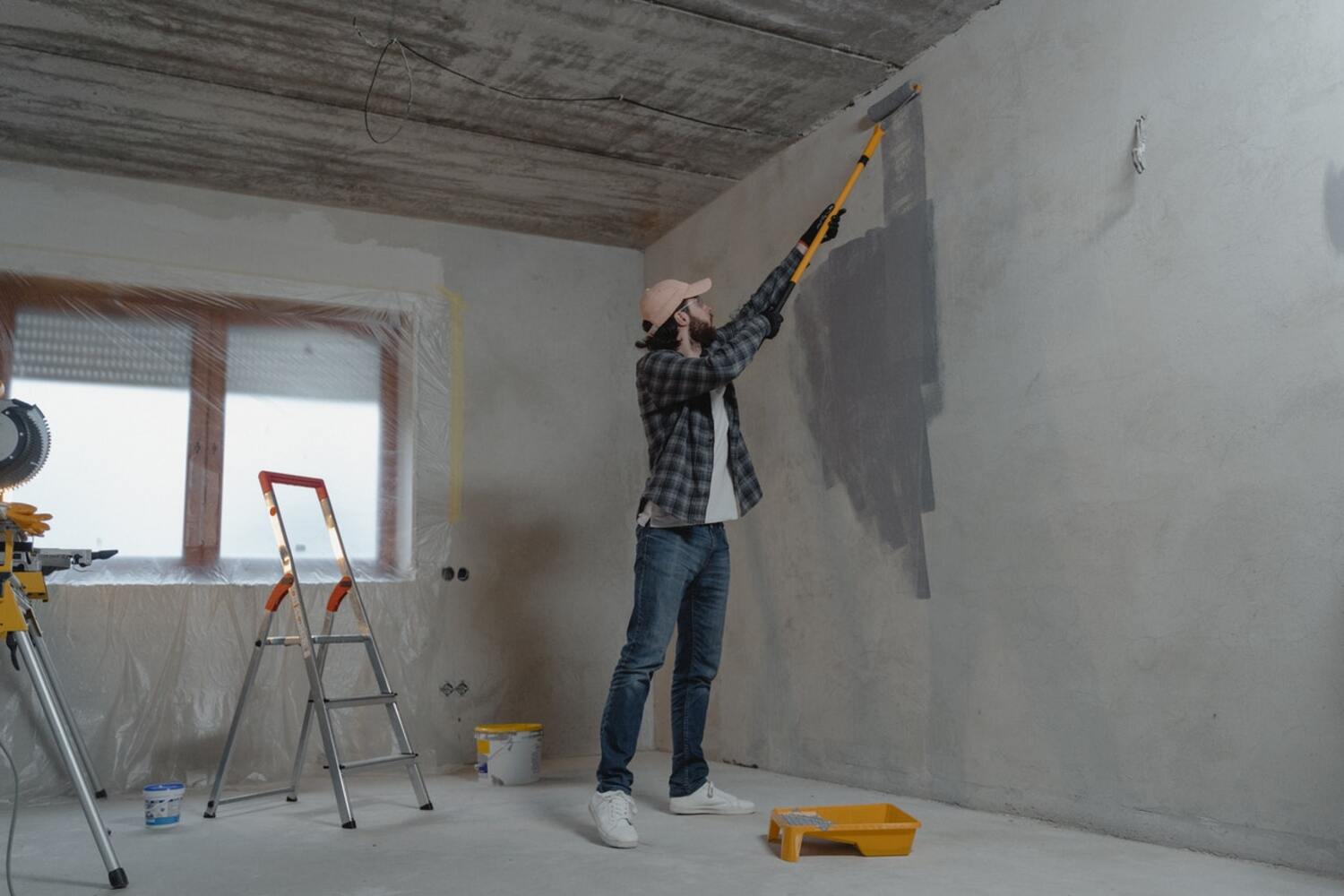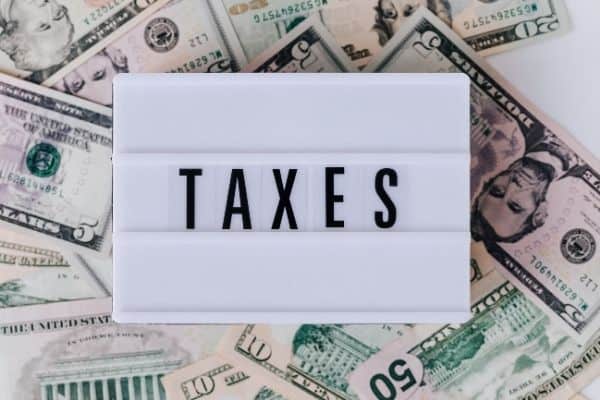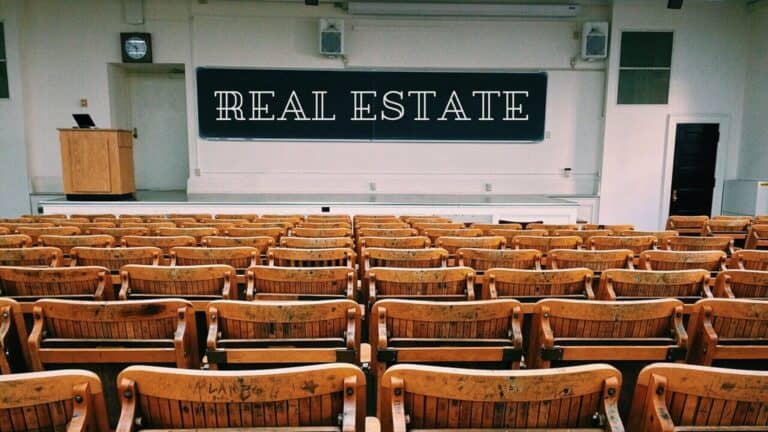What is an ARV in Real Estate + How to Calculate

If someone wanted to make money flipping or wanted to do the BRRRR method for a Buy & Hold investment, then understanding what is an ARV is a necessity!
However, not all house flips are made equal. That is why real estate investors need to know and understand their numbers. Otherwise, their FLIP could be a FLOP!
With every rehab project, I fine-tune my ability to estimate an ARV accurately. I had my fair share of flips and flops.
So, to all the beginners wanting to get into real estate, I strongly encourage you to know your numbers!
What is an ARV?
After Repair Value (ARV) is the property’s value after a property has been repaired, improved, or renovated.
The formula to calculate the ARV is the property’s initial value plus the value of renovations.
For example, if a property’s initial value upon purchase was $100,000, and an investor spent $20,000 worth of renovations, the ARV is $120,000.
After Repair Value Formula = Property’s Initial Value + Value of Renovations
= $100,000 + $20,000 = $120,000
The key terms to note here are value and worth. Just because an investor spends $20,000 in rehab costs, doesn’t necessarily mean they are adding $20,000 in value. Furthermore, ARV is subjective to the comps in the area and the current market situation. Not all improvements and repairs have the same impact toward the ARV.
What Adds Value?
Unfortunately, beauty is in the eye of the beholder.
I had to replace a $7,000 cracked main sewer line in one of my properties. That kind of repair doesn’t show up in an appraiser’s report nor increase the appraised value, but I had to fix it!
Upgrades to the kitchen and bathrooms are the areas where a homeowner or an investor can add.
However, the target clientele is different from a house flipper and a landlord. A flipper or a real estate developer leans towards higher-grade finishes, whereas a landlord likes clean but budget-friendly improvements.
Furthermore, if there is an opportunity to add more finished spaces and even a bedroom, do it! These are other options to increase the value of a property. In one of my rental properties, I created an extra bedroom by installing two separate doors in an open space.
For the record, this addition is legal according to the city code. Every city has different laws on what constitutes a legal bedroom. In my market, a legal bedroom is a finished space with two points of exit along with forced air conditioning.
What is a Good After Repair Value?
The way to determine a fair and accurate ARV is by researching the nearby and recently sold comparable properties (also known as “comps”).
A person can find this kind of information in the city’s public records or multiple listing service, such as Zillow.
Nearby properties refer to properties within one mile and are the same or similar quality neighborhoods. I’ve seen property values differ by $50,000 between two communities next to each other and share the same zip code.
Recently sold properties should be properties sold within the last six months to 12 months.
It’s essential to account for the lowest and highest sold prices. These price ranges give an upper and lower limit. I recommend being conservative and lean towards the property sold at a lower price.
We would all like to hit home runs. But, save yourself the trouble and heartache by using conservative numbers.
Comparable properties are properties of the same design (i.e., split-level, ranch) and have a similar number of bedrooms, bathrooms, age, size, square footage, etc.
Also, it’s essential to include, as part of the analysis, a property with one less bedroom. This inclusion helps an investor estimate a lower limit for an ARV.
Lastly, bathrooms in the basement don’t weigh as equally as the bathroom on the main floor. It is because bedrooms and bathrooms in the basement are below grade.
For example, I gutted a basement bathroom in one of my properties and replaced it with a brand new one. Unfortunately, the appraiser identified the bathroom as below grade and didn’t reward me for my hard work. They appraised below my expectations.
Check out the Comparative Market Analysis Spreadsheet below to estimate potential after repair value.

Comparative Market Analysis Spreadsheet
Below is a simple spreadsheet you can use to estimate a property’s ARV.
You can use lookup recently sold comps using one of the online real estate market places. Or, you can ask your real estate agent to access the Mulitple Listing Service (MLS) to provide comprehensive data on various properties.
Don’t forget to include a comp with one less bedroom to identify the lower limit. And, most importantly, be conservative when running your numbers!
Why is ARV Important?
Real estate professionals that know how to estimate the ARV gives them an idea of how much to list a house. Hence, investors can calculate their maximum offer price derived from accurately estimating the ARV.
House flippers need to make at least a certain amount to cover operating costs, such as renovation costs, financing costs, holding costs, closing costs, and taxes to determine their property’s purchase price.
The lower the purchase price from the ARV, then the more significant margin for profit: the best real estate deal!
The 70 Percent Rule
The 70 percent rule is a simple calculation to give an investor a general idea of how much the maximum purchase price should be—the formula to calculate this rule’s maximum purchase price is the ARV multiplied by 70%.
For example, if the estimated ARV for a property is $250,000, then the 70% rule formula says an investor should purchase for $175,000.
70% Rule Purchase Price = 70% x $250,000 = $175,000
This rule aims to make a 30% return on the investment. However, this return is not net profit. The profit from the sale of a house needs to cover the renovation costs, closing costs, and taxes.
It’s important to note that the rule is just a guide. 70% of $200,000 is different from 70% of $500,000. Some properties may require more or fewer renovation costs. Also, Buy & Hold investors may even go above offering 70% of the ARV to acquire a property in an appreciating area.

House Flipping Taxes
Short-term capital gains are the profits from a sale owned for less than a year. Long-term capital gains are the profits from a sale held for at least a year or more!
Short-term capital gains tax is usually higher than long-term capital gains tax. Therefore, it’s essential to consider the estimated tax when determining a purchase price for a flip.
For more details, seek professional advice from an experienced tax specialist.
LTV vs. ARV
The Loan To Value Ratio (LTV) is a percentage of a loan to the current market value. For example, a house with a loan balance of $170,000 and a market value of $280,000 has an LTV of 60%.
LTV = loan balance / market value = $170,000 / $280,000 = 0.60 or 60%
Lenders use an LTV for different scenarios: adding private mortgage insurance (PMI) to a mortgage payment or creating a cash-out refinance loan.
Therefore, an ARV is used to determine an upper limit that an investor could sell a house for while LTV relates to financing and getting a loan.
Scenario 1: Private Mortgage Insurance
Mortgage loans that are insured by the government include private mortgage insurance (PMI). The purpose of the PMI is to offset the risk the government takes on when guaranteeing the loan.
Besides home buyers having to pay interest on their mortgage, they also have to pay for the PMI. The benefit is to the lender and not the one’s borrowing.
Fortunately, most lenders allow the cancellation of the PMI when the LTV is less than 80%.
For example, if the loan balance is $190,000 and the market value of the house is $210,000, then the LTV is 90%. Therefore, the mortgage payment will still include the PMI because the LTV is not below 80%.
However, some banks will only drop the PMI when the current loan balance is less than 80% of the initial loan balance. Therefore, be sure to check with your lender for their specific rules.
In either case, making extra payments towards the principal will bring down the current balance faster.
Scenario 2: Cash-out Refinance
A “cash-out refinance” is a new loan based on the percentage of a property’s current value. A mortgage lender usually applies an LTV of 75% to 80%.
For example, a $175,000 valued house and an LTV of 80% will create a maximum loan balance of $140,000 ($175,000 x 80%).
The maximum loan amount from the refinance pays off the balance from the first mortgage loan. The difference between the refinanced loan balance and the previous loan balance is the remaining cash and can be for anything.
Ideally, an investor can recoup their initial investment with the remaining cash, such as the down payment and rehab expenses.
This strategy is commonly used by Buy & Hold investors, known as the BRRRR method. This strategy allows investors to scale by recouping their initial investment through refinancing and use it towards another rental property.
Within my first six months of real estate investing, I acquired two properties using this strategy.
How To Fund A Real Estate Investment
If you want to start flipping houses, you’ll most likely have to purchase it with cash! Motivated sellers, such as absentee owners or those in foreclosure, want to close on a property as soon as possible.
Here are some simple ways you can leverage other people’s money to purchase a real estate investment. To learn more about leveraging other people’s money, check out the article: 4 “No Money” Ways To Invest In Real Estate.
Hard Money
A hard money lender can be an individual or a company. However, they operate a little differently than a bank. For example, banks typically check a person’s credit score and employment to see if they qualify for a loan, while hard money lenders do not.
Hard money loans last for a shorter term compared to a traditional loan, such as 6-12 months, and also have higher interest ranging from 12%-15%!
Private Money
Private money lenders are nonprofessionals who are usually friends or family. They are usually lending from their 401k or other retirement accounts.
They have much lower interest rates compared to a hard money loan and are even negotiable. The term also has the flexibility to be longer compared to a hard money loan.
Home Equity Line of Credit (HELOC)
A Home Equity Line of Credit (HELOC) doesn’t disperse an entire amount like a home loan. Instead, it’s a readily available amount that a person can borrow and repay back.
A HELOC is similar to a credit card where a borrower pays monthly interest-only payments on the amount borrowed for a certain period. The HELOC balance is a percentage of a person’s home equity and uses the house as collateral.
Conclusion
All investors need to understand their numbers. Successful investors make their money by buying right!
Experienced investors use the after repair value (ARV) formula to determine their maximum bid price on an investment property. They also correctly manage their timelines and budgets.





